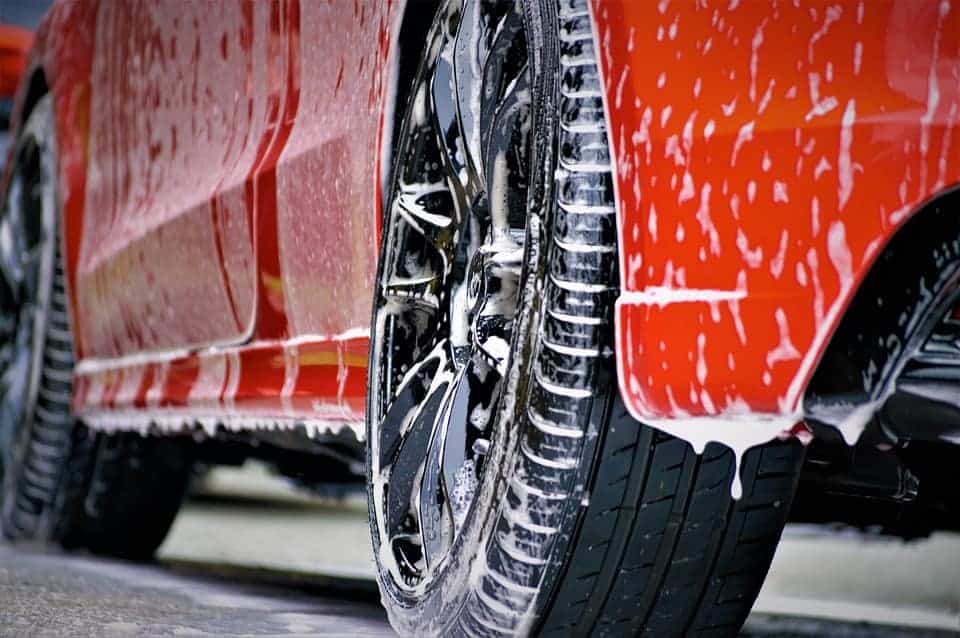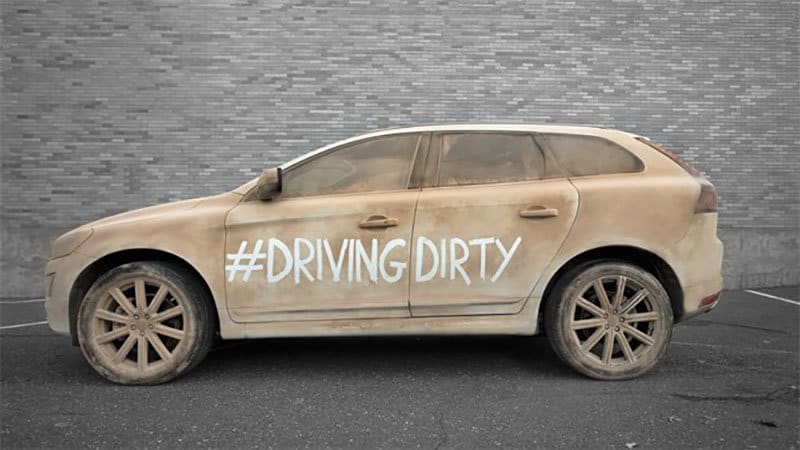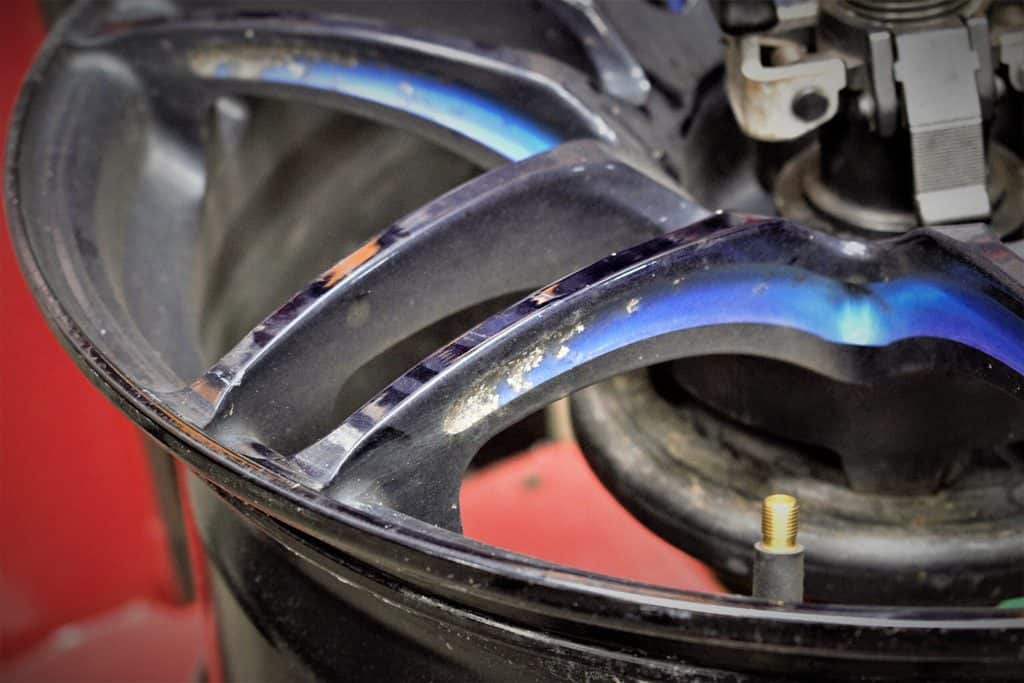It’s a dangerous world out there folks, for both homo sapiens and their modes of transportation alike. From tree sap and sandstorms, to avian excrement and acid rain, the list of naturally occurring elements that are quick to damage a car’s exterior are numerous. Topping it off are all of the man-made materials that come into contact with cars; many of which can be just as detrimental (if not more so) than organic matter.
Not sure what products are safe for your vehicle’s exterior? We suggest keeping the following tidbit of automotive advice in mind.
“If it’s man-made and isn’t specifically engineered for automotive applications, chances are it shouldn’t be anywhere near your vehicle’s exterior.”
-AvalonKing
We get that life is filled with unexpected circumstances, that’s why here at AvalonKing we believe that it’s always better to be prepared than be caught unawares. That said, sometimes it’s impossible to avoid a specific contaminant. When this happens it is imperative that you act fast, because if any of the following man-made materials are left to linger on an automobile’s paintwork and/or glass, all form of damage is prone to surface.

Cleaning Products That Can Severely Damage a Vehicle’s Paintwork
There’s a reason why the automotive detailing shelf down at the local auto parts store is buckling under its own weight. Unlike hardwood floors, granite countertops, and stone fireplaces, automotive body panel and functioning components consist of man-made materials that have been specifically engineered for vehicles, and oftentimes come covered in paint and a clear coat. And when it comes to selecting cleaning products for an automobile’s exterior, there are a lot of options to choose from, yet for some reason, many people continue to use the wrong chemicals on their cars.
There’s a reason why the average household cleaner and/or disinfectant should never be used on an automobile. Many automotive materials are specifically engineered to withstand extreme temps, and are oftentimes coated with protective media to reduce scratching, moisture absorption or damage, as well as fade from heat and UV rays. Household cleaners and disinfectants are typically too abrasive, and have been linked to everything from clear coat damage and paint fade, to corrosion, discoloration, oily texturing, glass hazing, and more.
Some of the more common cleaning supplies to avoid include dish soap, vinegar, and any other scrubbing or disinfecting chemical with an extremely high pH content. These products may not cause noticeable paint damage right off the line, but they have all been flagged due to their ability to cut into protective outer coatings when given enough time.
Another commonplace cleaning product to be wary of is WD-40. Although some people may swear by WD-40’s water repelling characteristics, the oils found within this “wonder spray” are notorious for collecting dirt, dust, debris, and other contaminants. Once sprayed with WD-40, surface areas become increasingly sticky over time, and therefore attract filth at a far more rapid pace, which if not removed in a timely fashion, can damage your paint.
Another one to watch out for is hydrogen peroxide. Despite not being a direct threat to automotive paint, hydrogen peroxide does one hell of a number on any wax or sealant sitting atop it, drastically reducing the protective properties put in place to protect the automobile’s porous hard surfaces.
Beware of ammonia-based window cleaners as well. This strong smelling household glass cleaner is not only awful for tinted windows, but like the previous chemicals, ammonia has the tendency to devour the coatings resting atop automotive paint. There’s a reason why automotive glass cleaner exists.
As for bleach, this hardcore cleaning chemical should be avoided due to its ability to act as an oxidizer, especially when scratches and scuffs are present. While it may not pose an immediate threat to the clear coat or any other protective coating atop a vehicle’s paintwork, bleach has the ability to expedite pitting and rusting in exposed metallic surfaces, and discolor paint if given enough time. Regardless as to whether it’s a “non-chlorine, oxygen, or color-safe bleach,” all of these products contain chemicals like sodium hypochlorite, which even when diluted, should be kept away from automotive surfaces.
And despite isopropyl alcohol (IPA) solution being a crucial chemical for wiping down surfaces prior to the installation of a ceramic coating, it should never be used at full strength. The 99% stuff is without question the greatest threat too, as it has the ability to eat through multiple layers of protective coatings rather quickly, and can permanently damage a vehicle’s paint if not removed right away.

Decorative Products That Can Wreck your Ride’s Clear Coat and Paint
Thinking about dressing-up your automobile for a festive holiday or a special celebration? While they may honor the event you plan on enjoying/attending, decorations have the ability to do some serious automotive havoc as well. Decorative substances damage more than paintwork too, with a vehicle’s projected resale value being the priciest portion of the problem. Precisely why the following products should either be avoided entirely, or removed upon contact.
Silly String
Part compressed Styrofoam, part “Cheez Whiz,” this party store aerosol staple may seem like harmless sprayable fun, but there’s a dark underside to this gunk. Silly string is notorious for staining vehicle surfaces and leaving behind unsightly, heavily faded sections of clear coat. The cause of this issue stems from the resins and chemical-rich colorings contained within silly string, both of which are prone to causing even more damage when they harden. When left to bake in the hot sun, or on areas of an automobile that are high in temperature, like the hood or headlights, silly string turns into a marring material with lasting repercussions.
Shaving Cream
Ever seen someone’s car get decorated with shaving cream for graduation or a wedding? Although it may seem like a fun prank, certain foaming shaving creams harbor discoloration capabilities, which if left in place for prolonged periods of time, can permanently alter a car’s paint surface. Certain shaving creams contain chemicals that can cause clear coat to fade as well, so skip the decorative foam lettering, and hit that glass with some window-safe markers instead.
Washable Paint and Markers
Speaking of window-safe erasable markers, certain products have been found to leave residue behind no matter how much you scrub. So if you don’t want permanently pigmented glass, look for a window marker with favorable reviews. Washable paint poses its own concerns, because even though it does rinse away with water, scratches in the clear coat can materialize due to the coarseness of the paint brush or foam pad used, as well as the amount of pressure being applied. Combining washable paint with extended exposure to direct sun has also been linked to the discoloration of plastics, while certain products harden to the point where the use of strong chemicals is deemed necessary.
Car Magnets
The magnet may be long gone, but a silhouette is still there, making that old car magnet one expensive marketing mistake you will never forget. Sun fade sucks, but so does discoloration from magnet rust. Our suggestion is that you spend the money, and get a high end vinyl wrap instead.

Other Risks To a Car’s Paintwork
If your vehicle is not protected by a 9H rated ceramic coating, chances are some, if not all, of the following products have the ability to inflict damage upon your automobile’s paintwork.
Egging
If you discover the remnants of a splattered egg on your automobile, there are three probable scenarios that led to its ill-placed presence.
Scenario #1: An unforeseeable accident caused a crate of eggs to fall off a truck and plaster your prized possession with protein.
Scenario #2: That wren’s nest over the carport was structurally compromised in the windstorm last night, and now you’ve got to clean-up the mess.
Scenario #3: You’ve pissed someone off, and the passive aggressive POS has pelted your ride with Grade A goodness.
Regardless as to what the situation may be, those eggs can quickly damage your car’s finish due to their acidic nature. If left for long enough, egg residue will not only eat into an automobile’s clear coat, but bake into its surface as well, permanently damaging every layer, from wax to base coat.
Plasti Dip
Plasti Dip was one hell of a hot aftermarket mod for a minute there, and then everyone realized how easily it could be damaged, and how painful Plasti Dip problems can be when it’s time for removal. So while this sticky coating may not damage your paintwork upon application, the removal of said material is notorious for causing clear coat catastrophes.
Vinyl Decals
Much like car magnets, vinyl decals have the ability to lead to some serious discoloration and fade issues, especially if placed in an area that comes into direct contact with sunlight. Upper portions of the windscreen are particularly notorious for vinyl “ghosting,” where even after removal, an outline of the vinyl decal remains, haunting the vehicle’s owner from the automotive afterlife.
The Dusty Touch
Scribbling “WASH ME” on a dusty liftgate may seem like a harmless gag, but this is one hell of a risky way of writing a message. Dust and dirt scratch surfaces when combined with enough pressure, and if left for too long, can etch into clear coat and painted surfaces. We suggest giving them a touchless car wash voucher instead.
Automatic Sprinklers
Ever mix a questionable water source with scorching hot sunshine on a pallet of fresh car paint? It’s not pretty. Just say no to hard water spots, and park well away from automatic sprinklers.
Magic Erasers
Most magic erasers are constructed from melamine foam, a material commonly found in soundproofing and ducting insulation. Outside of coming loaded with cleaning chemicals, the melamine in magic erasers is also extremely abrasive. Rocking a 3000 to 5000 grit sandpaper consistency when wet, and a whopping 800 grit sandpaper rating when dry, magic erasers are a product that should never come into contact with a vehicle’s paintwork.
Brake Fluid
Regardless as to whether you are using a DOT 3, 4, 5.0, or 5.1 brake fluid, the life-saving liquid found within an automobile’s braking system is quick to eat into your car’s paint at an alarming rate. Fortunately, brake fluid can be easily removed by blotting the area with paper towels or rags, and is quickly neutralized when followed by a quick wipe-down and wash with an automotive approved shampoo.
Coffee
Coffee has extremely high acidity levels, which if left for long periods of time, can devour clear coat and etch into the paint underneath. The sugars in sweetened coffee can also damage clear coat, especially when allowed to crystallize on the surface. So place that coffee cup on the ground, and never put it on your roof when climbing inside.
Tar/Asphalt
Fresh asphalt stinks. Literally and figuratively. When hot, this sticky black stuff effortlessly embeds onto surfaces, and if given the chance, will permanently make its mark on things like alloy wheels and painted panels.
Road Salt and Deicers
It’s no secret that oxidation from road salt causes cars to rust. But not a lot of people know that deicers are just as harmful in their own way. These chemical rich liquids have the ability to weasel their way into all manner of nook and cranny, making them a threat to many hard-to-reach areas.
Fuel
Petrol stains appear when the car’s clear coat becomes compromised by the freshly evaporated combustible liquid. That splash of spilt gasoline near the fuel cap may not seem like a big deal (likely due in part to fuel’s transparent appearance) but once cured it will cause a noticeable mark on the surface that will likely require paint correction.
Soot and Ash
OK, so wildfires are bad news for cars no matter what the scenario. But let’s not forget barbecue grills and campfires. Both of these flame-filled fundamentals produce soot and ash, potassium and calcium-rich debris that has been linked to etching and staining on automobile surfaces.

Tips for Maintaining a Car’s Paint Job
So now that we’ve identified the more common man-made offenders, what are some suggested practices for keeping a car’s paint job and glass devoid of these damaging foreign contaminants?
Removing the aforementioned materials upon contact should always be your first approach. Sure, it may take pulling over for a few minutes, while you clean the unwanted mess away, but that’s the sort of sacrifice that must be made in order to keep a clear coat devoid of damaging debris. This why we recommend keeping a “quick clean emergency pack” in the vehicle at all times, complete with a quality detailing spray and some fresh microfiber towels.
It’s also wise to park your car in a covered area or in a garage when available. Many of the naturally occurring elements mentioned above come from above, so removing this factor from the equation will make a huge difference in your vehicle’s external longevity. The same goes for DIY car washes. To prevent contamination, always use a 2 bucket washing system, followed by a thorough microfiber cloth wipe-down to prevent hard water spot formation.
Finally, be sure to clean the towels you use on your car after every use. A filthy cleaning towel will do more damage than good when applied to a paint surface, so when in doubt, reach for a clean rag.
Fresh microfiber, parking indoors, and a weekly cleaning routine will only get you so far though. Adding a high-end ceramic coating, like Armor Shield IX, to your car cleaning arsenal is like conducting a secret aerial attack in the battle with man-made contaminants. Not only will a ceramic coating of this caliber protect your car’s paint job, but it will also make cleaning less of a chore down the road.













3 comments
Skyler borg
What is the best windshield wiper solution that should be bought or made that is effective and doesn’t harm the paint? Some always gets on the roof paint…
What is the best windshield wiper solution that should be bought or made that is effective and doesn’t harm the paint? Some always gets on the roof paint…
Dale Pearl
Thank you, Josef!
Was there a particular message or content that helped you? What type of situation were you facing with your own vehicle?
Thank you, Josef!
Was there a particular message or content that helped you? What type of situation were you facing with your own vehicle?
josef
your content is very helpful.
your content is very helpful.